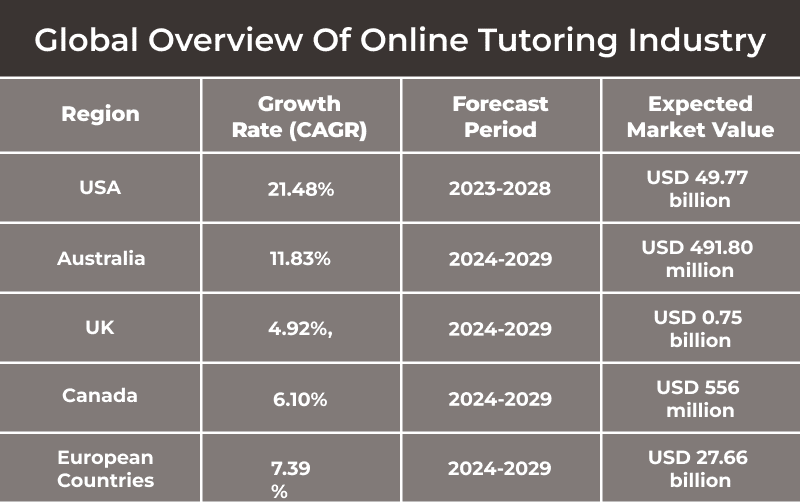Recognizing the Challenges: Why Students Find Statistics Tough and Exactly How Tutoring Assists
Statistics presents numerous obstacles for pupils. The details of fundamental concepts, combined with complicated terminology, typically cause misconceptions. Misconceptions can stem from cognitive prejudices, especially in identifying connection from causation. Customized tutoring becomes a feasible solution, providing customized instruction that addresses specific discovering needs. As pupils navigate these hurdles, they might find that the best assistance can transform their understanding and attitude towards the topic. What other benefits might this method offer?
The Intricacy of Analytical Principles
Analytical concepts are necessary for information evaluation, their intricacy typically presents significant challenges for learners. Lots of students struggle to realize fundamental ideas such as possibility, distributions, and hypothesis testing. These concepts need not just mathematical abilities however additionally an understanding of their real-world applications, which can be abstract and unintuitive. Making use of lingo and technological language additionally makes complex the learning process, making it tough for pupils to connect theory with method. Furthermore, the interaction in between different analytical approaches can result in confusion, particularly when establishing the appropriate strategy for an offered dataset. As students attempt to navigate these complex ideas, they may end up being overloaded, leading to aggravation and disengagement. This complexity necessitates reliable training strategies and helpful resources, such as tutoring, to assist students develop confidence and accomplish a deeper understanding of statistics. Recognizing these challenges is the very first step towards helping with much better academic results in the field.
Difficulties in Information Analysis
Data interpretation offers significant challenges that can hinder exact analysis and decision-making. Pupils frequently have a hard time to draw meaningful verdicts from information because of a lack of familiarity with different statistical approaches and devices. Misconception can develop from the frustrating quantity of information, bring about confusion about which metrics matter. In addition, cognitive predispositions might cloud judgment, causing trainees to prefer information that confirms pre-existing ideas as opposed to examining information fairly.
Another obstacle hinges on distinguishing relationship from causation, a crucial concept that can skew understanding of relationships within information collections. Additionally, the graph of data, such as graphes and charts, can occasionally misdirect if not interpreted properly, leading to inaccurate final thoughts. These obstacles emphasize the significance of creating solid information analysis skills, as they are essential for making educated decisions in both academic and real-world contexts. Effective tutoring can provide the guidance needed to overcome these obstacles and foster better comprehension.
The Role of Likelihood in Data
Just how does probability form the structure of statistical analysis? Probability functions as a critical device in data, allowing researchers to make reasonings concerning populaces based upon sample information. By evaluating uncertainty, probability makes it possible for statisticians to estimate the possibility of different end results, promoting decision-making processes. For instance, likelihood distributions, such as the typical distribution, supply essential frameworks for comprehending information habits and irregularity.
Ideas like hypothesis screening rely heavily on probability to determine the value of results. This interplay between probability and data assists in evaluating the validity of cases and leading additional study. Understanding chance is essential for analyzing analytical results properly, as it aids to contextualize findings within their more comprehensive unpredictability. A solid understanding of likelihood concepts outfits trainees with the analytical abilities required to tackle complex analytical obstacles, fostering a much more extensive comprehension of the subject issue.
Usual Misconceptions About Stats
What are some typical mistaken beliefs that typically cloud the understanding of stats? Many individuals erroneously believe that stats just entails numbers, neglecting its conceptual structures. Some assume that a little example dimension can yield trusted conclusions, overlooking the value of depictive information. Another common misunderstanding is the belief that connection indicates causation, resulting in incorrect analyses of connections in between variables. In addition, many trainees believe that stats Clicking Here is only regarding calculations rather than recognizing its role in data interpretation and decision-making. Others may view data as a rigid self-control, stopping working to appreciate its adaptability in various contexts. Misunderstandings concerning analytical relevance, such as equating it with sensible relevance, additionally add to complication. These false impressions can hinder trainees' capability to grasp analytical ideas successfully, typically leading to irritation and stress and anxiety when engaging with the topic. Resolving these misconceptions is necessary for fostering a more thorough understanding of data.
The Advantages of Individualized Tutoring
Customized coaching offers considerable advantages for pupils having hop over to here a hard time with statistics, as it customizes instruction to private understanding designs and demands. This tailored method allows tutors to recognize certain areas of difficulty and adapt their teaching methods appropriately. By concentrating on the distinct challenges each pupil deals with, customized tutoring cultivates deeper understanding and retention of analytical ideas.
Furthermore, one-on-one communication provides trainees with the opportunity to ask concerns openly and receive instant feedback, enhancing learning effectiveness. Individualized tutoring likewise assists develop self-confidence, as students development at their own speed without the pressure of a class environment.

Regularly Asked Questions
What Previous Expertise Is Needed Prior To Researching Stats?
Anticipation in fundamental maths, consisting of algebra and arithmetic, is crucial prior to examining stats. Knowledge with ideas such as features, variables, and information interpretation substantially boosts understanding and application of statistical principles in real-world circumstances.
Just How Does Innovation Impact Understanding Data?
Technology enhances learning data by supplying interactive devices, simulations, and visualizations that clarify concepts. On the internet systems allow collective understanding and accessibility to resources, promoting a much deeper understanding of statistical approaches and encouraging involvement among trainees.
Are There Details Research Study Techniques for Mastering Data?
Efficient research study strategies for grasping statistics include active experiment analytic, making use of aesthetic help, creating study teams for joint discovering, and using real-world instances to improve understanding and retention of statistical concepts.
What Careers Require Solid Statistical Skills?
Careers calling for solid analytical skills include data analyst, statistician, actuary, market scientist, and epidemiologist. These careers take advantage of analytical techniques to translate data, inform choices, and resolve complicated problems throughout different industries, enhancing general analytical capacities.
How Can Group Study Sessions Aid With Stats?
Group research check my blog sessions improve understanding of stats by promoting collaborative analytic, enabling diverse perspectives on complex ideas, and promoting a helpful atmosphere where trainees can clear up uncertainties and reinforce discovering with conversation and shared sources. Statistics Help.
